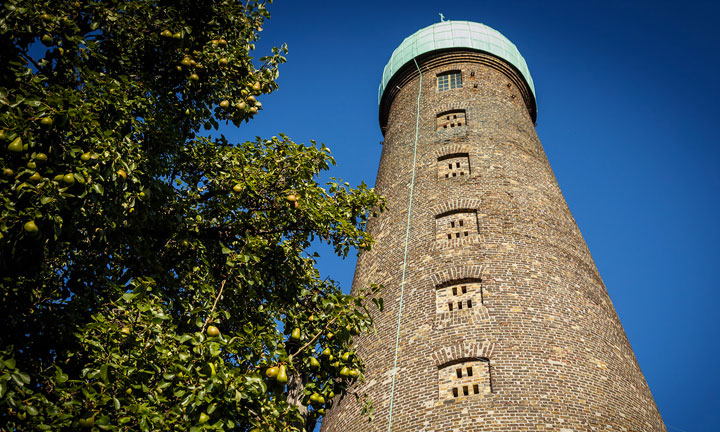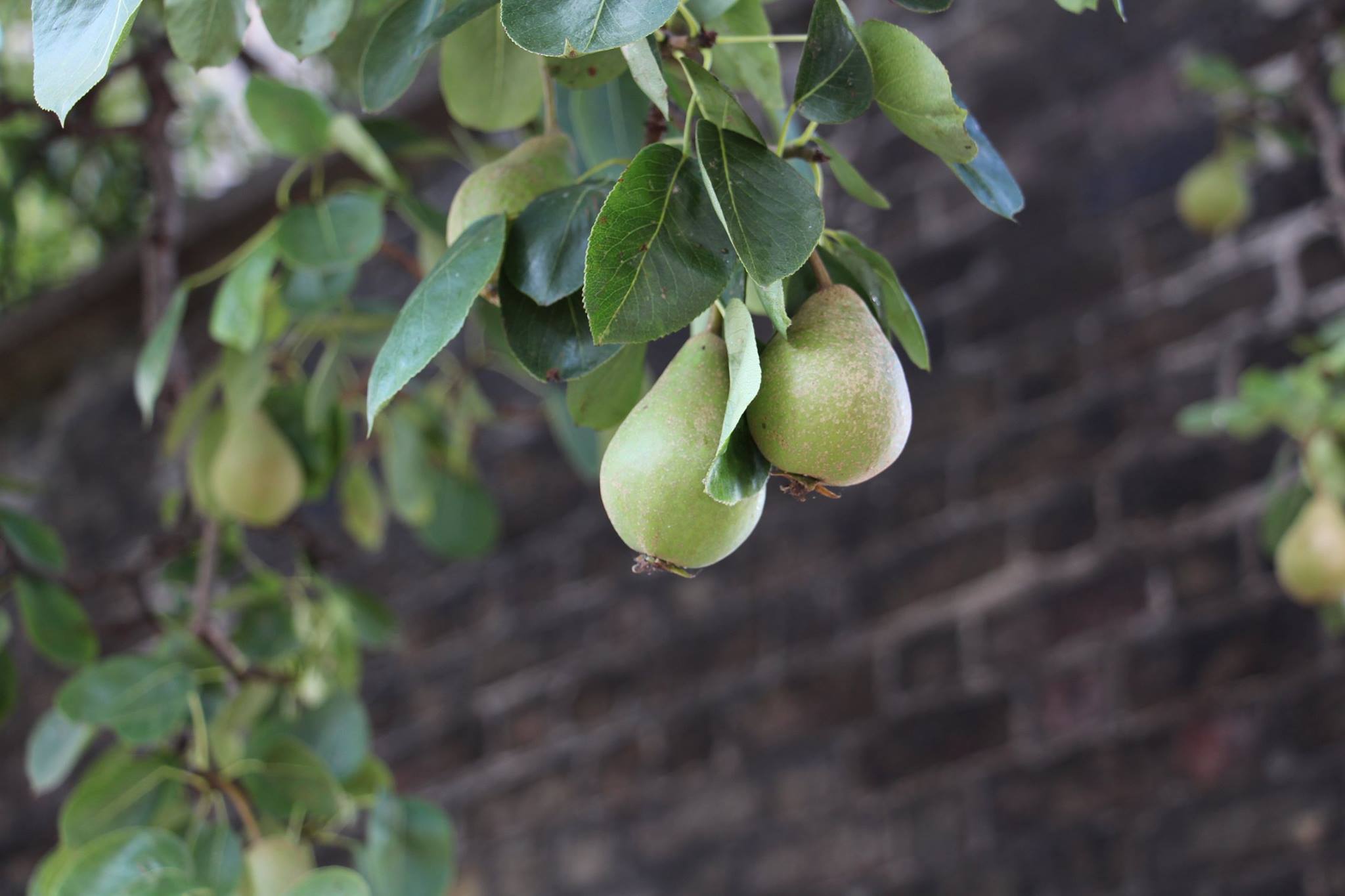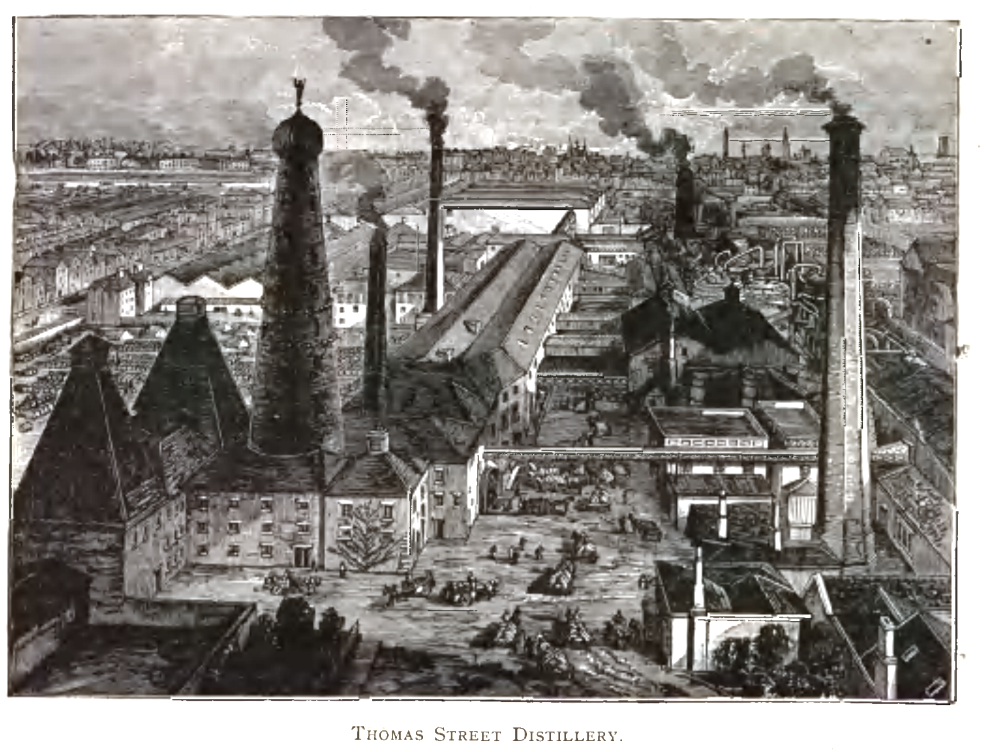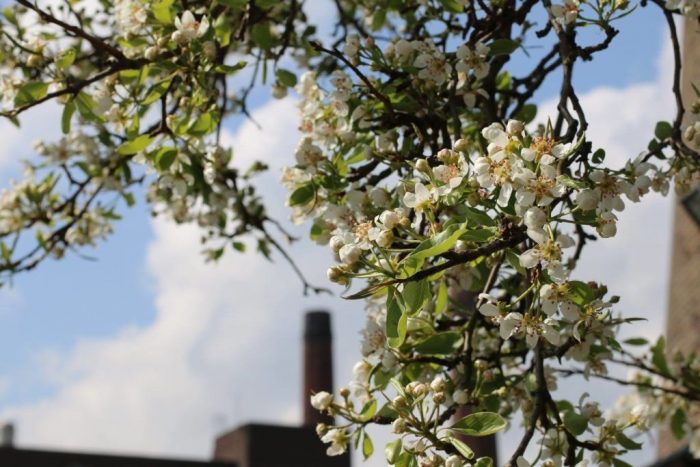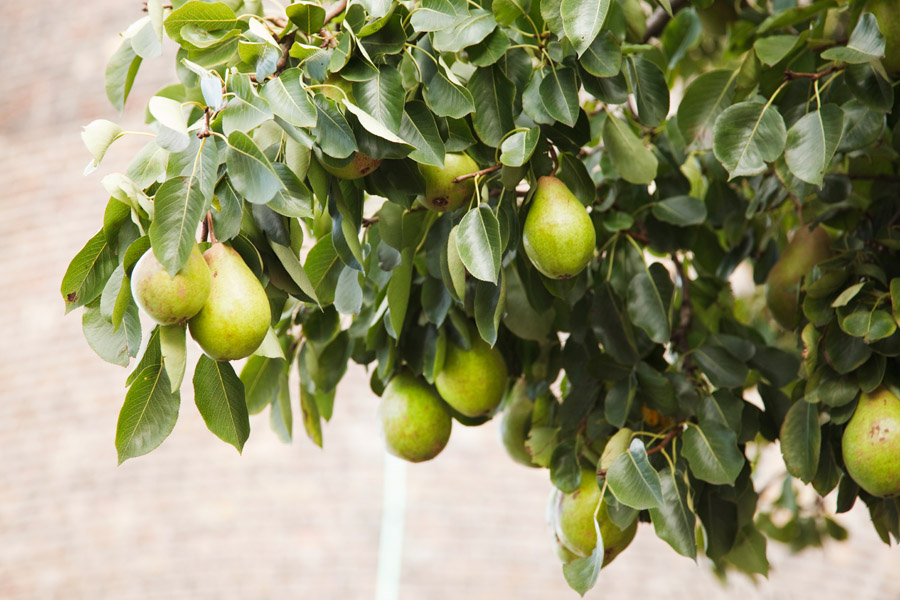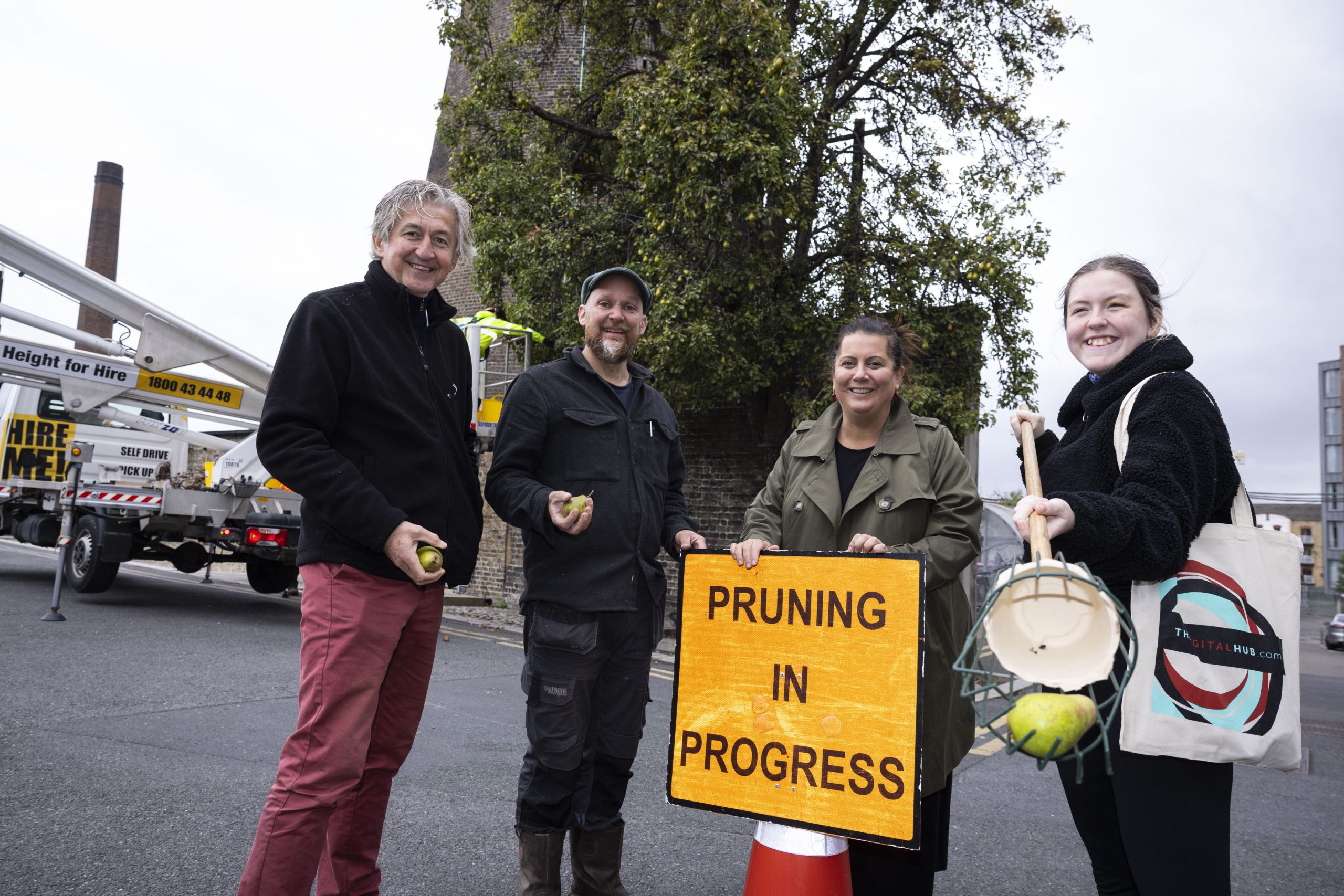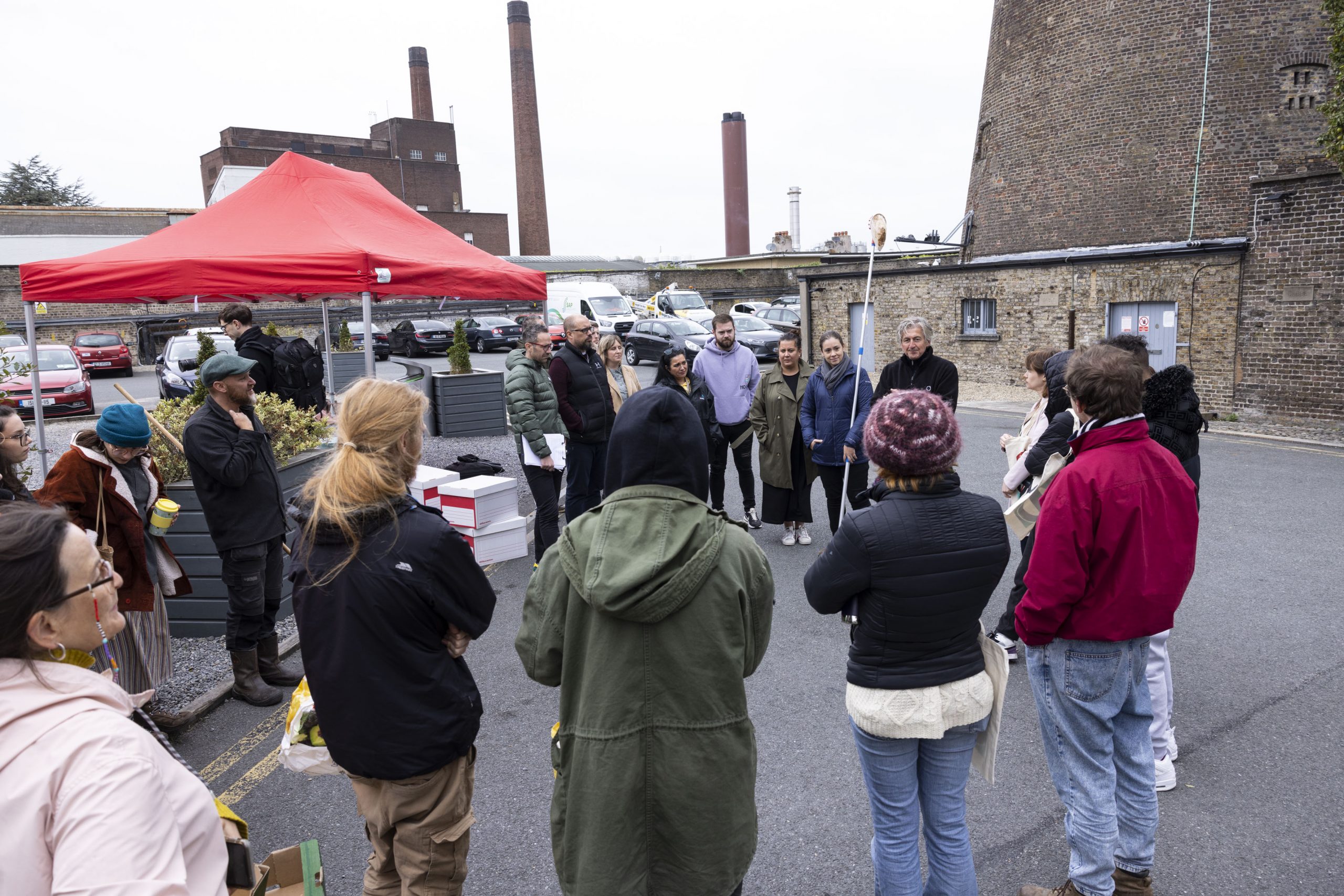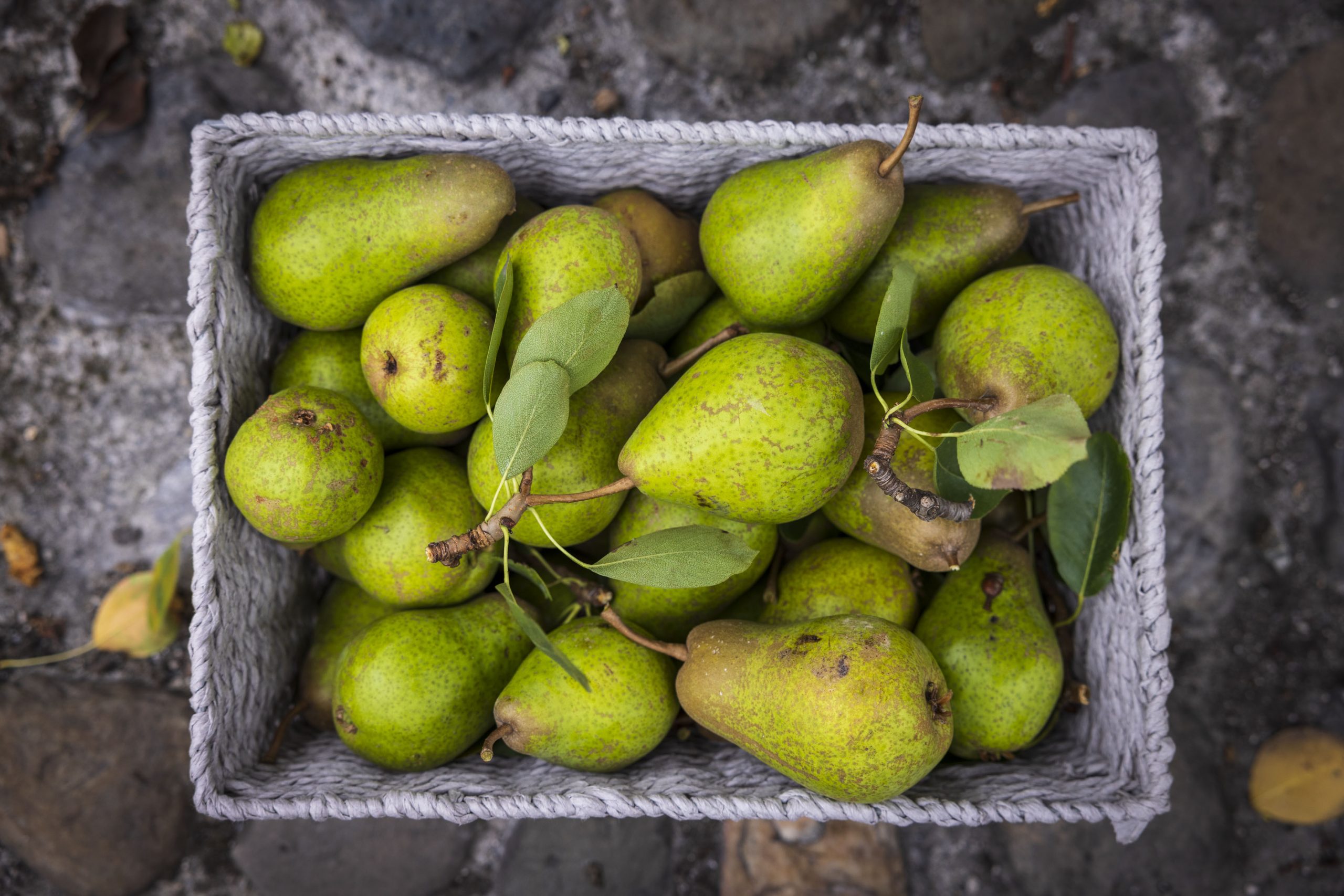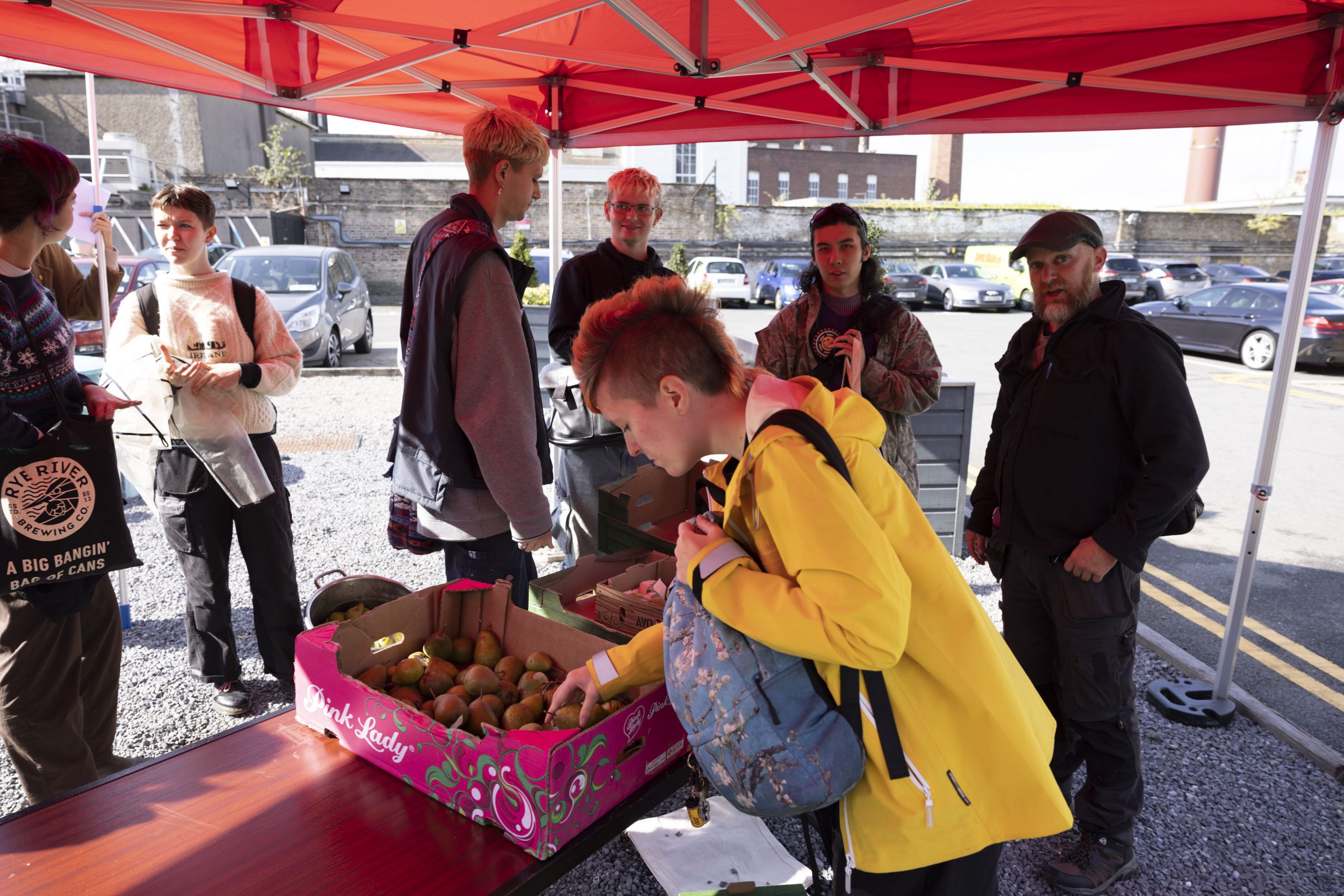The tree stands next to an historic industrial building called St. Patrick’s Tower — a structure that was once the largest smock windmill in Europe. It was built in 1757, as part of the George Roe & Co. whiskey distillery and rebuilt in 1805 with the latter date evident on a stone plaque.
A tree, which it could be said is the pear tree at The Digital Hub, is visible in a sketch of the then George Roe’s Distillery circa. 1892, which lends some credence to its status as one of Ireland’s oldest fruit bearing trees.
In Summer of 2022 a sample was collected and sent to the Irish Seed Savers Association, who in turn sent it to a UK lab for DNA extraction to provide certainty as to the age and provenance of the tree. This was part of a project with Gareth Kennedy, Lecturer, Sculpture and Expanded practice at the nearby National College of Art and Design.
DNA analysis confirmed that the pear tree is “Marechal de Cour”, also known as “Conseiller de la Cour”. This was a popular variety in Britain in the Victorian era, from where it would have quickly spread, as the latest variety to have. All analysis indicates that the original estimate of its age as dating from early-to-mid 1800’s is correct.
This variety was raised by Jean-Baptiste Van Mons, a Belgian physicist, chemist, botanist, horticulturist and pomologist, and prolific pear breeder. In 1842 Van Mons sent grafts of the pear tree to Alexandre Bivort, a Belgian horticulturalist, specialising in pomology. He was particularly influential in systematising the nomenclature of strains of pear. He named the variety Conseiller a la Cour in honour of Van Mons’s son.
In 1847 Bivort sent it to Robert Hogg, a Scottish nurseryman and botanist, known as a pomologist who also contributed to the science of classification. At this time the variety became popular in Britain from where is it likely to have spread quite quickly as the latest variety to show off. If the variety arrived from England and not France, as is most likely, it can be no older than 1847.
Our friends at Pocket Forests held ‘The Baby Pear Project Workshop’ in October 2021. In the workshop that year’s pear crop was used to grow offspring pears from seed. You can read a very evocative description of the pear tree and its importance as a heritage tree of Ireland from Catherine Cleary of Pocket Forests:
The pear tree in The Digital Hub is older than any human alive on the planet. When she was planted slavery was still in full force in the world, pioneers were travelling west on the Oregon Trail. Women the world over couldn’t vote. The worst years of the Irish Famine were a very recent memory and most Dubliners lived in squalid conditions around what was then a 17-acre site of the Thomas Street Distillery.
The smock windmill was built in 1757, nearly a century before this pear tree was planted. Sacks of grain were carried on men’s shoulders up the winding staircase of the windmill to be ground by millstones at the top.
In his book The Lost Distilleries of Ireland Brian Townsend quotes a visitor to the 18th century site describing its beauty. “He described the distillery entrance as the most striking he had seen, like a chateau in France, with ivy covered walls and flower beds … ” and the largest at 17 acres.
There are no written records of the pear tree but she is there in pictures: An etching from 1888, a photo from the 1960s and 21 years ago in 2000. In each one the pear tree is there.
In 2009 the pear joined the list of Ireland’s Heritage Trees, a Pyrus Communis, or common pear, “estimated to be between 150 and 200 years old
We think she’s a real uncommon pear and a sentinel tree that has seen the city swirling and changing around her, a mill building demolished, grown with the smell of whiskey being made, then a petrol station fronting onto Thomas street as horses were replaced by cars, and in recent years, whiskey distilling back again. And every year she has blossomed and produced pears. Over two centuries this beautiful mother tree has produced hundreds of thousands of pears.
She’s a marvellous example of the abundance of trees, why when we give them space in cities they give us so much more back again.
In autumn 2022, The Digital Hub held a community harvest of the pear tree. The National College of Art & Design (NCAD), the Liberties Training Centre and the South Inner City Community Development Association (SICCDA) represented the community and spoke about the importance of the historic pear tree.
The crop of pears was put to good use by all involved, as students and lecturers/tutors from NCAD, the Liberties Training Centre along with SICCDA, the Robert Emmett Community Development programme and The Digital Hub later gathered at NCAD to taste an array of pear jams and pear tarts.
https://www.treeregister.ie/724.htm
https://www.buildingsofireland.ie/buildings-search/building/50080329/saint-patricks-tower-thomas-street-watling-street-dublin-8-dublin
https://www.pocketforests.ie/
